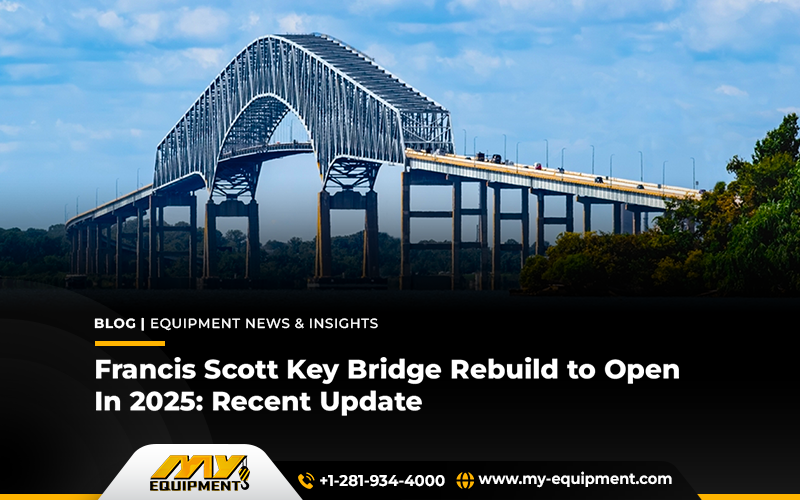Exciting and long-awaited news about the Francis Scott Key Bridge is finally here. The rebuild of the recently collapsed bridge has started and is in the first phase, expected to be completed in 2025. In this first phase of the rebuild, construction will take a $73 million progressive Design-Build contract won by the Kiewit Infrastructure Co. They will be leading the project as a principal contractor which will be supervised by the Maryland Department of Transportation (MDOT).
A brief background of Kiewit Infrastructure
After the news came on the mainstream media, people have been curious about the leading contractor company, Kiewit Infrastructure. The company was founded in 1884 in Nebraska and has been quite successful since then. After a thorough consideration, the project was awarded to the Kiewit as it has been in the industry for a long that has made many notably successful projects.
In the first phase of the Key bridge rebuild project, Kiewit will be developing the project scope and specification in collaboration with the MDOT and all other key stakeholders. This thorough methodology is the part of Progressive design-build process which is likely to streamline the project completion on the said deadline along with taking the leverage of design and construction services from a single contractor.
Note that Kiewit is only going to lead the project till the end of the first phase. They will be expected to bid again for the next phase which will include the bridge’s new design, engineering, and construction.
Key Bridge Renovation
According to the recently received information, the basic design of the Key bridge is quite compelling and will be accommodating the traffic flow in a more organized way.
The new bridge will be constructed with a four-lane capacity within the same right-of-way as the old one, guaranteeing the flow of traffic across Baltimore Harbor.
Although the renovation process is huge and will take a lot of heavy construction machinery and material on board for the construction, the project will not violate the environmental protection clauses. The Federal Highway Administration (FHWA) has previously granted MDOT permission for the rebuild under the terms of the National Environmental Policy Act (NEPA), along with an unconditional exclusion designation, removing all significant legal obstacles to the project’s advancement.
What will be the Impact on Traffic in Baltimore?
To facilitate the transition and minimize traffic disruptions, tolls at the I-695/Exit 44 turnaround, which connects to the bridge, have been suspended. This suspension will last until the bridge replacement is finished in 2028. A Tragic Prelude The decision to rebuild follows a tragic incident that occurred in March 2024 when a cargo ship named Dali struck the original Francis Scott Key Bridge, resulting in a catastrophic collapse. By June, the 50,000 tons of debris from the ship strike had been cleared, allowing access to the busy Baltimore Port. Three months after the deadly collision, the Dali left the port.
Kiewit’s Verified Experience
Kiewit offers an excess of expertise to this undertaking. The National Asphalt Pavement Association recently bestowed upon the company the renowned Sheldon G. Hayes Award in recognition of their superior paving of a segment of U.S. 287, using all the resources and heavy equipment for sale in Texas. The company is a qualified contractor for a major infrastructure project because of its established track record and recognition in the industry.
A Glance
The Francis Scott Key Bridge reconstruction, whose work is scheduled to start in 2025, will update a major way in Baltimore and improve efficiency and safety for years to come. By 2028, when the project is finished, the new bridge will serve as an essential channel for trade, commuters, and the region’s infrastructure as a whole.
The collaboration of MDOT, Kiewit, and other relevant parties will be decisive in empowering the city of Baltimore to proceed with this key project and writing a new chapter in the state’s transportation history.


 1400 Broadfield Blvd, Houston, TX 77084,
USA.
1400 Broadfield Blvd, Houston, TX 77084,
USA. omer@my-equipment.com
omer@my-equipment.com